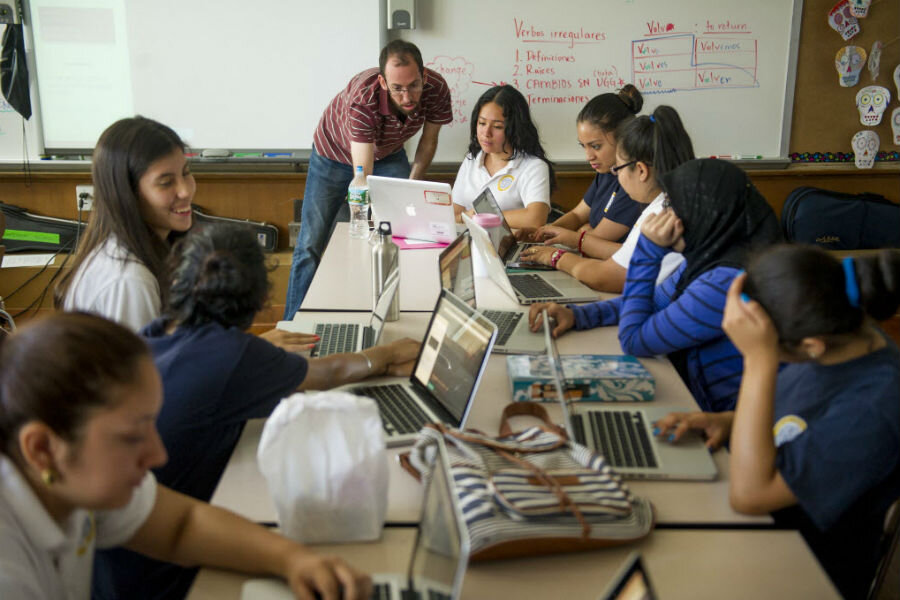Nobel Prize: What will it take to have more women as winners in science?
Loading...
On Tuesday, when winners for the 2016 Nobel Prize in physics were announced, a hashtag #NobelforVeraRubin circulated around Twitter.
It was a brief movement started by some scientists who wondered why Vera Rubin, a female American astronomer who played an influential role in discovering dark matter, didn’t win the award despite the importance of her research – especially since the last time a woman won a physics Nobel Prize was 53 years ago.
There has been progress in the past decade: 15 women were Nobel winners from 2005 to 2015 compared to single digit wins decades before that. Most of the female winners were in the categories of peace, physiology or medicine, and literature, according to the Nobel Prize website.
Nobel laureates are overwhelmingly male. Between 1901 and 2015, only 49 out of 870 Nobel prizes for individuals have been awarded to women. One explanation is that there are simply fewer women in science, technology, engineering, and mathematical (STEM) jobs, as the US Census Bureau data shows. But it leads to a question that many have been asking: Why aren't more women participating in STEM fields?
The answer, some experts say, may lie in working environment and gender biases that discourage women from progressing across scientific fields and sometimes entering it in the first place.
"What we're seeing is there is still very slow progress and a lot of attrition," Beth Mitchneck, professor of geography at the University of Arizona, tells The Christian Science Monitor in a phone interview. "Women leave the field to a higher degree than men – and academic or leadership positions, they're not getting [those]."
A 2012 study found physicists, chemists and biologists often view young male scientists more favorably than a woman with same qualifications, and that could translate into more job offers and higher pay, reported The New York Times. Further increasing the challenges to aspiring female scientists, a 2014 study found that elite male faculty are less likely to train or employ female graduate students, as reported by Science. Sexual harassment is another challenge women face when working toward a STEM career, as they need recommendations from (mostly male) superiors to complete their degrees or find employment.
And another study published earlier this year found that when they do make it into the field, women are disproportionately doing the rudimentary experimental work such as pipetting and sequencing while men take credit for analyzing data and writing the study.
"The work that women often do with students is not valued as much – women are doing much more of the housekeeping," Dr. Mitchneck says. "I was doing detailed work with undergraduate students and male colleagues will get the high-profile assignments... Often women end up with higher teaching loads."
Perhaps as a result of these added challenges, fewer women stay on: National data shows that women participation in STEM field tapers off as it progresses from schooling to employment.
From 2002 to 2012, more women graduated with science and engineering related bachelor's degrees than men, according to data from the National Science Foundation, although the bulk of the degrees are in psychology, social sciences and biological sciences. Men still far outnumber women in computer sciences, and mathematics and statistics. But more men are awarded doctorates in science and engineering fields, and they still dominate STEM jobs.
According to a Census Bureau latest STEM report from 2013, men are employed in STEM occupations at twice the rate of women, and nearly 1 in 5 female science and engineering graduates leave the labor force compared to 1 in 10 for males.
Some more recent research may show progress. In 2015, a study published in the Proceedings of the National Academy of Sciences found that although male scientists are still paid more and hold more top-level jobs, faculty members prefer female candidates for tenure-track jobs. As Nature reports, science may be "inching towards gender equality."
It's not that women aren't talented enough to stay in the field and win recognition in the field. Last year, girls outscored boys on a national technology and engineering literacy test administered to eighth-graders. Past female Nobel laureates include Marie Curie, the legendary female scientist who won the physics prize twice for her work in nuclear physics.
"The Nobel prizes are very subjective because there are many types of scientific discoveries that contribute to our discoveries and our world," Catherine Hill, vice president of research of the American Association of University Women tells The Christian Science Monitor in a phone interview. She says what are "the absolute most important discoveries" will differ depending on your background.
The lack of diverse viewpoints in a field can be risky as it affects accuracy of experiments. For example, female civil engineers bring a different perspective to transportation design, as women in many cases are the primary caregivers and understand mobility issues of the young, elderly, and people with disabilities, the National Geographic reported in 2014.
"At every stage it becomes less and less diverse," Mitchneck says. "There are still these very significant issues that are endemic in the culture. It's not a matter of training women to become more like men – it's a matter of changing the workplace so they can feel like it's a place where they can thrive."
Many women in STEM are trying to create that environment by encouraging the younger generation to join them. In 2014, an initiative called Million Women Mentors was launched. Mentor-mentee partnerships were formed, with 847,633 mentor pledges reaching more than 30 million girls and women, according to the website.
Some are experimenting with all-girls public STEM schools. The Young Women's Leadership School of Astoria, a network of five other schools in New York City, hope to empower girls to "march confidently into fields where they have long been underrepresented," as The Christian Science Monitor reported in 2015.
Mitchneck also used to be a program officer for ADVANCE, a National Science Foundation program launched in 2001 specifically to increase representation and advancement of women in STEM careers. Through grants and projects in universities and nonprofits, it focuses on diversifying the recruiting processes and changing work environments.
"When you have a diverse group of people around the table, those diverse voices result in an end product that would otherwise have never been developed," she says.








